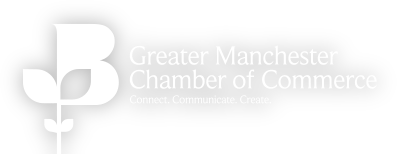
Exhibiting at trade shows and events offers a brilliant opportunity for businesses to expand their reach, connect with prospects, and drive growth. However, achieving a positive return on investment (ROI) and return on objectives (ROO) requires careful navigation of the potential pitfalls of exhibiting.
Let's delve a bit deeper into the five most common mistakes exhibitors make that hinder their success:
- Disconnected Strategy from Business Growth Goals
Many exhibitors overlook the critical step of aligning their exhibition strategy with their broader business objectives. Without this alignment, their efforts at trade shows often lack direction and fail to contribute meaningfully to overall growth.
When exhibitors fail to connect their exhibition strategy with their business growth goals, they risk pursuing initiatives that may not align with the company's long-term vision. This disconnect can lead to a lack of clarity in decision-making and resource allocation. For example, without a clear understanding of how trade show participation fits into the larger marketing and sales strategy, exhibitors may invest in activities that do not drive the desired outcomes or generate a positive ROI.
- Ignoring the Attendee Journey
Failing to plan and orchestrate the attendee journey is a common oversight among exhibitors. Without a well-defined pathway to guide visitors through the booth experience, exhibitors struggle to capture attention, engage effectively, and convert leads.
The attendee journey encompasses every interaction a visitor has with an exhibitor, from the moment they enter the exhibition hall to their post-event follow-up experience. Ignoring this journey means missing out on opportunities to create memorable experiences, address visitor needs, and move prospects closer to conversion. Exhibitors who neglect to map out the attendee journey risk delivering a disjointed and inconsistent experience that fails to resonate with attendees and ultimately hampers their ability to achieve a positive ROI.
- Undertrained and Unqualified Booth Staff
Exhibitors often underestimate the importance of adequately training and qualifying their booth staff. Without the necessary skills and knowledge, booth personnel struggle to represent the brand effectively, resulting in missed opportunities and ineffective engagement with attendees.
Booth staff serve as the frontline representatives for the brand during trade shows and events. When they lack proper training and qualification, they may struggle to communicate the brand message, engage with attendees, and address their inquiries effectively. This can lead to missed opportunities for lead generation, relationship building, and ultimately, revenue generation. Exhibitors who fail to invest in the development of their booth staff risk undermining their exhibition efforts and jeopardising their chances of achieving a positive ROI.
- Neglecting Key Performance Indicator (KPI) Measurement
Many exhibitors overlook the importance of measuring and evaluating key performance indicators (KPIs) to gauge the success of their exhibition efforts. Without this critical feedback loop, exhibitors are left in the dark about the effectiveness of their strategies and miss out on opportunities for improvement.
KPI measurement provides exhibitors with valuable insights into the performance of their trade show activities and helps them identify areas for optimisation. Without a clear understanding of which metrics to track and how to interpret the data, exhibitors may struggle to assess the impact of their efforts and make informed decisions for future events. Neglecting KPI measurement means missing out on opportunities to identify strengths, address weaknesses, and refine strategies to maximise ROI.
- Lack of Proper Follow-Up Procedures
Failure to implement a structured follow-up plan is a common pitfall among exhibitors. Without timely and personalised follow-up communication with leads and contacts, exhibitors risk losing momentum and failing to capitalise on the connections made during the event.
The success of trade show participation extends beyond the event itself and relies heavily on the effectiveness of post-event follow-up. In the absence of adequate follow-up procedures, exhibitors may face challenges in nurturing leads, cultivating relationships, and consequently converting prospects into customers.
This lack of follow-up not only diminishes the impact of their exhibition efforts but also represents a missed opportunity to capitalise on the investment made in attending the event. Exhibitors who neglect follow-up procedures risk losing valuable leads and undermining their chances of achieving a positive return on investment and objectives.
In conclusion, mastering the principles of Trade Show Engagement Optimisation (TEO) can help exhibitors avoid common mistakes and achieve a positive return on investment from their exhibition efforts. By aligning strategy with business objectives, planning the attendee journey, empowering booth staff, measuring KPIs, and implementing proper follow-up procedures, exhibitors can maximise their impact and drive tangible results at trade shows and events.
Source: Expo Stars, Chamber MEmber
Need Help optimising your trade show engagement and maximising ROI?
- Consider attending our How to Generate More Business From Trade Show Exhibitions Masterclass on 23rd May at GM Chamber, Manchester from 9.30am – 1pm.
- Are you taking goods to use at trade fairs, overseas shows or exhibitions or commercial samples? How customs ready are you? Our team is at hand to provide expert advice on how to move your goods on temporary basis using either ATA Carnets or supporting you with customs clearance. You can contact our team at export docs@gmchamber.co.uk or chambercustoms@gmchamber.co.uk , or alternatively calls us at 0161 393 4314.
- New to using Carnets? Why not join our Step by Step workshop taking place on the 23rd May virtually?

